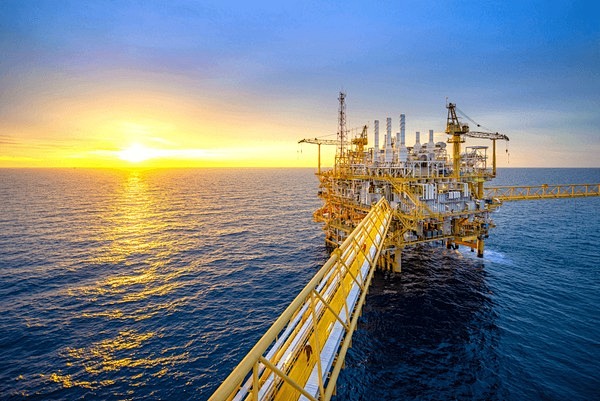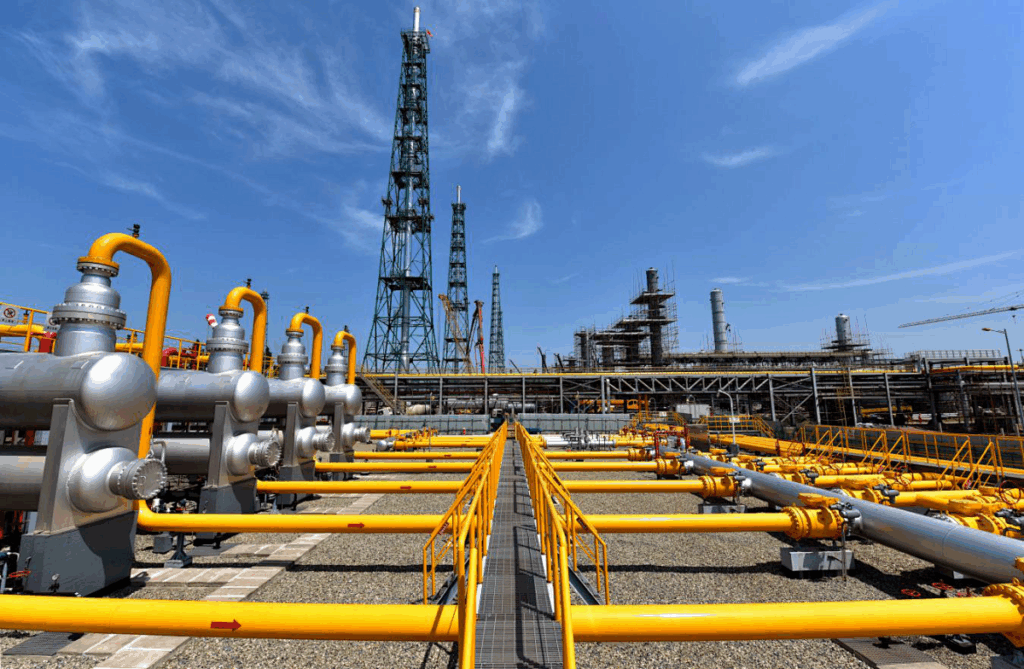Calcium bromide (CaBr₂) is a critical chemical compound extensively used in the oil and gas industry due to its high solubility, density, and stability under extreme conditions. This detailed report explores its applications, working mechanisms, advantages over alternatives, challenges, case studies, and future trends—providing a 2,500+ word in-depth analysis.
1. Primary Applications of CaBr₂ in Oil & Gas
1.1 High-Density Completion and Workover Fluids
Function & Importance
Completion fluids are used after drilling to prepare the well for production, while workover fluids are employed during maintenance or remedial operations. CaBr₂ serves as a clear brine fluid, meaning it contains no suspended solids, which is crucial for preventing formation damage.
Key Benefits & Mechanisms
- High Density (1.7–1.8 g/cm³ or 14.2–15.0 lb/gal)
- The dissolved Ca²⁺ and Br⁻ ions increase fluid density without requiring solid weighting agents (e.g., barite).
- This prevents sedimentation issues that can occur with solid-laden fluids.
- Example: In a deepwater well with a formation pressure of 12,000 psi, a 15.0 lb/gal CaBr₂ brineprovides sufficient hydrostatic pressure to prevent a blowout.
- Solids-Free Nature
- Unlike drilling muds containing barite or bentonite, CaBr₂ brines do not leave residue in the formation.
- Why this matters: In permeable sandstone reservoirs, solids can clog pore throats, reducing permeability and production rates.
- Thermal Stability (Up to 260°C / 500°F)
- Many oilfields (e.g., Gulf of Mexico, North Sea) have HPHT (High-Pressure High-Temperature)conditions.
- CaBr₂ remains stable, whereas alternatives like CaCl₂ brines degrade above 150°C (300°F).
Real-World Application
- Case Study (Gulf of Mexico, 2018)
- A well at 20,000 ft depth required a 16.5 lb/gal fluid to balance formation pressure.
- Engineers used a CaBr₂/ZnBr₂ blend, achieving stability without damaging the reservoir.

1.2 Drilling Fluid Additive
Role in Drilling Operations
CaBr₂ is sometimes added to water-based drilling fluids (WBDF) to:
- Stabilize shale formations (prevent swelling and collapse).
- Reduce fluid loss into permeable zones.
Mechanism of Shale Inhibition
- Shale contains clay minerals (e.g., montmorillonite) that swell upon contact with water.
- Ca²⁺ ions from CaBr₂ bind to clay surfaces, neutralizing negative charges and reducing swelling.
- Result: Fewer wellbore stability issues (e.g., stuck pipe, hole collapse).
Example: Permian Basin Drilling
- A drilling operator in Texas switched from KCl brine to CaBr₂-enhanced fluid and reduced shale-related downtime by 30%.

1.3 Packer Fluids
Purpose & Mechanism
Packer fluids are placed in the annulus (space between casing and tubing) to:
- Maintain pressure balance (prevent casing collapse).
- Protect against corrosion.
Why CaBr₂ Excels
- Neutral pH (~6–7): Less corrosive than acidic brines (e.g., ZnBr₂).
- Long-term stability: Does not degrade or form precipitates over time.
Field Example (North Sea, 2020)
- A gas well required a packer fluid stable for 5+ years.
- CaBr₂ brine was selected over CaCl₂ due to better thermal resistance.
1.4 Perforation and Gravel Packing
Critical Role in Sand Control
- Perforation fluids must be clean (no solids) to avoid plugging perforation tunnels.
- Gravel packing requires a fluid that does not damage proppant or formation.
CaBr₂ Advantages
- No solids: Prevents clogging.
- High density: Helps transport gravel efficiently.
Case Study (Offshore Brazil, 2019)
- A sandstone reservoir with high sand production risk used CaBr₂ brine during gravel packing.
- Result: Zero sand production after completion.
2. How CaBr₂ Works in Downhole Operations (Detailed Mechanisms)
2.1 Pressure Control Mechanism
Hydrostatic Pressure Principle
- Hydrostatic pressure (P) in a well is calculated by:P=ρ×g×hP=ρ×g×hwhere:
- ρρ = fluid density
- gg = gravitational acceleration
- hh = vertical depth
- Example Calculation:
- A 15.0 lb/gal CaBr₂ brine at 10,000 ft exerts:P=15.0 lb/gal×0.052×10,000 ft=7,800 psiP=15.0lb/gal×0.052×10,000ft=7,800psi
- This balances a 7,500 psi formation pressure, preventing influx.
2.2 Formation Damage Prevention
Comparison with Barite-Weighted Muds
| Factor | CaBr₂ Brine | Barite Mud |
|---|---|---|
| Solids Content | 0% | 30–40% |
| Permeability Damage | Minimal | Severe |
Lab Test Data
- Core flooding tests show <5% permeability reduction with CaBr₂ vs. >50% with barite muds.
2.3 Shale Stabilization (Ionic Exchange Mechanism)
- Clay minerals have negative surface charges, attracting water (causing swelling).
- Ca²⁺ ions replace Na⁺ ions on clay surfaces, reducing hydration.
Experimental Proof
- Cuttings Dispersion Test: Shale samples in CaBr₂ show 70% less swelling than in freshwater.
3. Advantages Over Alternative Brines
| Brine Type | Max Density (lb/gal) | Thermal Limit (°F) | Corrosivity | Cost |
|---|---|---|---|---|
| CaBr₂ | 15.0 | 500 | Low | $$$ |
| CaCl₂ | 11.6 | 300 | Moderate | $ |
| ZnBr₂ | 19.2 | 500+ | High | $$$$$ |
Why CaBr₂ is Preferred for Most Applications
- Balanced cost-performance ratio.
- Better environmental profile than ZnBr₂.
4. Challenges & Solutions
4.1 High Cost
- Solution: Blend with CaCl₂ for mid-density (12–14 lb/gal) applications.
4.2 Hygroscopicity (Moisture Absorption)
- Mitigation: Store in nitrogen-purged tanks.
4.3 Bromide Toxicity
- Safety Protocols:
- Use chemical-resistant gloves.
- Dispose via deep-well injection.
5. Future Trends
- Nanotechnology: SiO₂ nanoparticles to enhance thermal stability.
- Bio-based Inhibitors: Replace toxic scale inhibitors.
6. Conclusion
CaBr₂ is indispensable in modern oil & gas operations due to its density, thermal stability, and formation-friendly properties. While cost and handling require attention, its technical superiorityensures continued use in HPHT, deepwater, and sensitive reservoirs.






